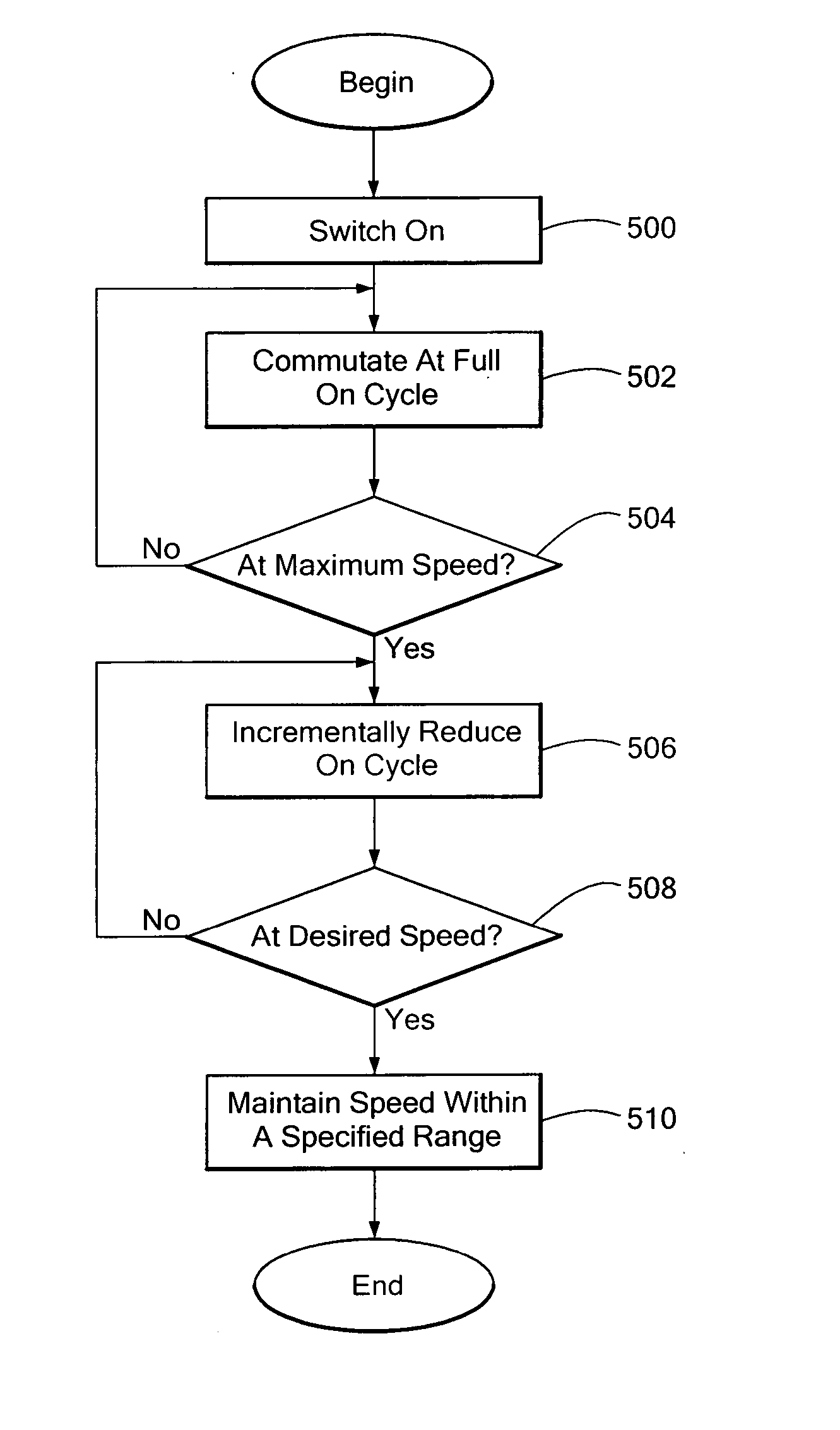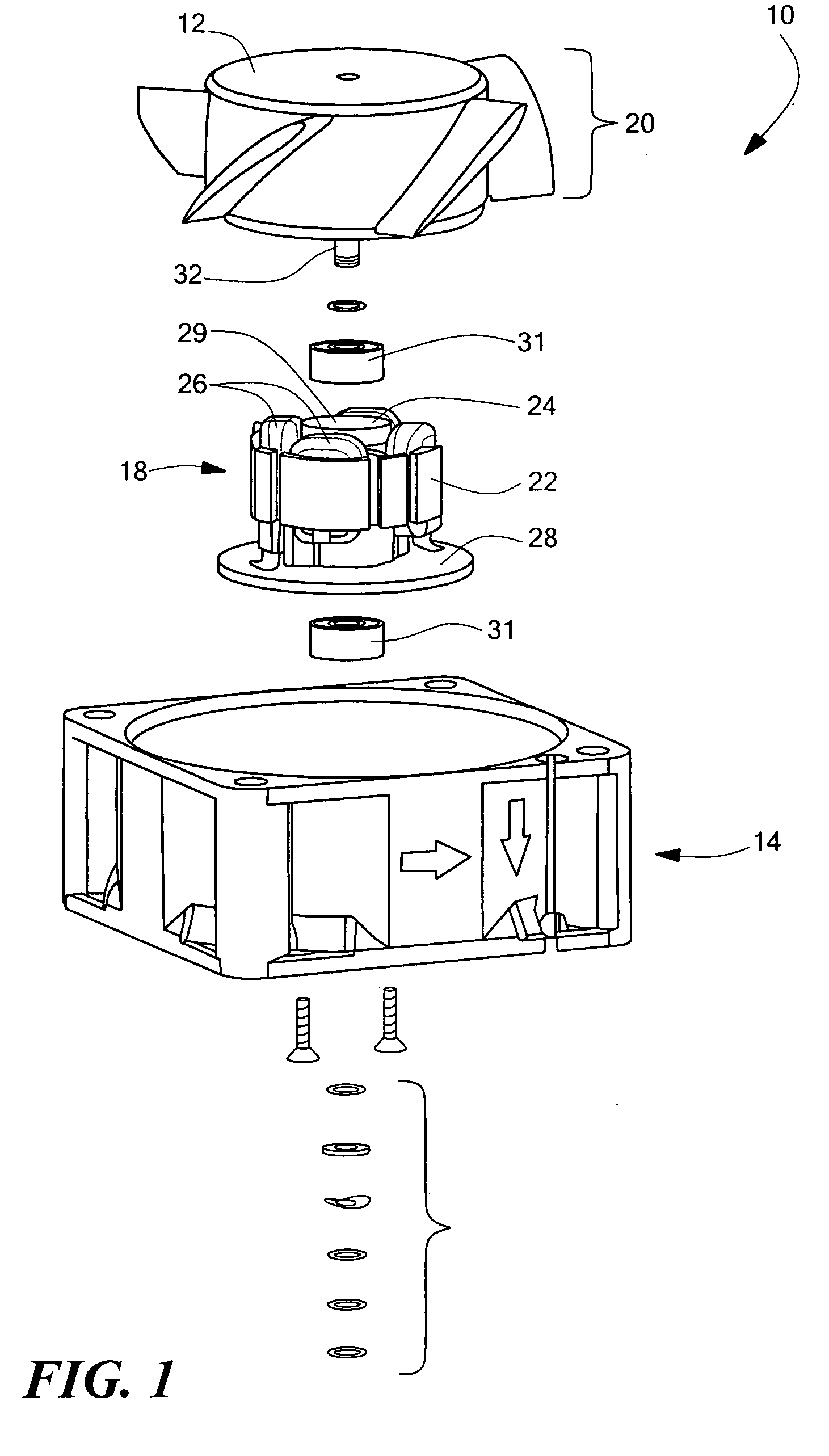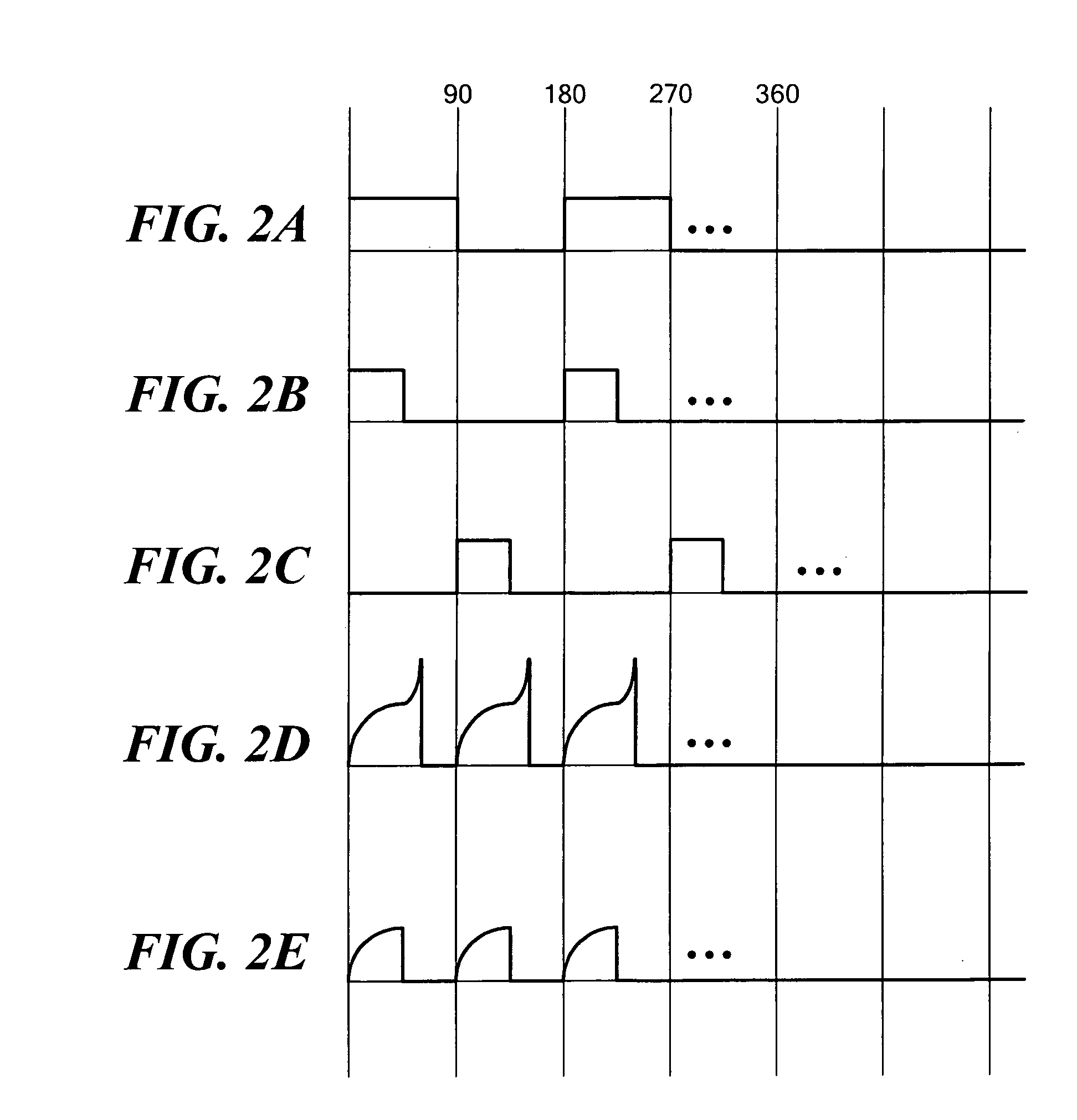Method and apparatus for controlling the speed of a DC motor
a dc motor and speed control technology, applied in the direction of motor/generator/converter stopper, dynamo-electric converter control, dc motor rotation control, etc., can solve the problems of increasing the temperature of power devices, and affecting the operation of motors
- Summary
- Abstract
- Description
- Claims
- Application Information
AI Technical Summary
Benefits of technology
Problems solved by technology
Method used
Image
Examples
Embodiment Construction
[0022] Rather than use pulse width modulated techniques, illustrative embodiments of the invention control rotor speed by producing one or more reduced duty cycle motor commutation signals. Various embodiments therefore do not require high frequency filtering circuitry for removing electromagnetic interference produced by pulse width modulation processes. Details of various embodiments are discussed below.
[0023]FIG. 1 schematically shows an exemplary brushless, four pole, DC motor 10 that may implement illustrative embodiments of the invention. In particular, the motor 10 includes a propeller 12 and thus, is a part of a cooling fan. To that end, the motor 10 includes a housing 14 with venturi (not shown), a stator portion 18 secured to the housing 14, and a rotor 20, which includes the propeller 12. It should be noted that although the motor 10 is implemented as a fan, illustrative embodiments apply to other motor applications. Accordingly, description of the motor 10 as a fan is b...
PUM
 Login to View More
Login to View More Abstract
Description
Claims
Application Information
 Login to View More
Login to View More - R&D
- Intellectual Property
- Life Sciences
- Materials
- Tech Scout
- Unparalleled Data Quality
- Higher Quality Content
- 60% Fewer Hallucinations
Browse by: Latest US Patents, China's latest patents, Technical Efficacy Thesaurus, Application Domain, Technology Topic, Popular Technical Reports.
© 2025 PatSnap. All rights reserved.Legal|Privacy policy|Modern Slavery Act Transparency Statement|Sitemap|About US| Contact US: help@patsnap.com



